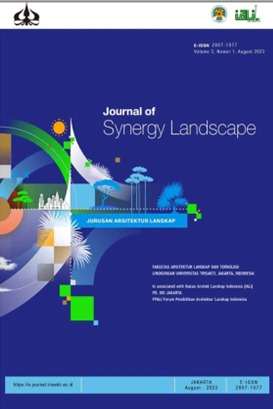
The campus of the Faculty of Sports Science has an area of 5 hectares in which there is open space. The purpose of this study is to determine the level of comfort in campus open spaces through measurements of air temperature, air humidity, and wind speed influenced by land cover (vegetation, pavement, water elements, and building orientation) in the campus environment. The theme of the study is the Comfort Zone, which focuses on user comfort to achieve the goal or criteria of thermal comfort in the environment based on the placement of space and human activities in the campus landscape. This research method uses quantitative descriptive methods. Observations were made in several locations on campus open spaces by purposive sampling on each different land cover characteristic using quantitative methods to obtain the Temperature Humidity Index (THI) value. The results showed that uncomfortable locations according to THI value standards were in all locations due to the use of pavement materials that did not absorb heat or vegetation that grew not optimally. This research shows that the presence of vegetation that shades a location can have an impact on decreasing the air temperature in that location.

Oleh :
Nur Intan Mangunsong